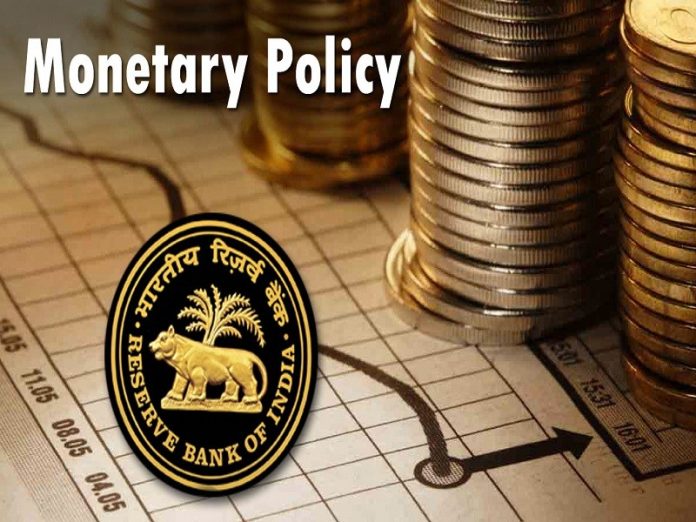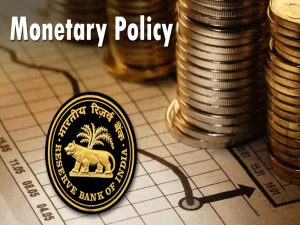On August 2, 2017, Reserve Bank of India (RBI) announced Third Bi-Monthly Monetary Policy Statement for financial year 2017-18. This time, RBI has cut the policy repo rate by 25 basis points (bps) to 6 percent.
Post the Third Bi-Monthly Monetary Policy Statement announcement, the policy rates and reserve ratios are as follows:
| Policy Repo Rate | 6.00% | Reduced by 25 basis points. Earlier it was 6.25% |
| Reverse Repo Rate | 5.75% | Reduced by 25 basis points. Earlier it was 6.00% |
| Marginal Standing Facility Rate | 6.25% | Reduced by 25 basis points. Earlier it was 6.50% |
| Bank Rate | 6.25% | Reduced by 25 basis points. Earlier it was 6.50% |
| Cash Reserve Ratio (CRR) | 4.00% | Unchanged – since 9th February 2013 |
| Statutory Liquidity Ratio (SLR) | 20.00% | Unchanged – since 7th June 2017 |
Highlights of RBI’s Third Bi-Monthly Monetary Policy Statement:
RBI has reduced the policy repo rate by 25 basis points from 6.25 per cent to 6.0 per cent with immediate effect.
- Consequently, the Reverse Repo Rate stands adjusted to 5.75 per cent, and the marginal standing facility (MSF) rate and the Bank Rate to 6.25 per cent.
- As per text of the third bi-monthly policy statement, decision of Monetary Policy
 Committee (MPC) is consistent with the neutral stance of monetary policy in consonance with the objective of achieving the medium-term target for consumer price index (CPI) inflation of 4 percent within a band of +/- 2 per cent, while supporting growth.
Committee (MPC) is consistent with the neutral stance of monetary policy in consonance with the objective of achieving the medium-term target for consumer price index (CPI) inflation of 4 percent within a band of +/- 2 per cent, while supporting growth. - MPC has expressed concern that farm loan waivers by states may lead to fiscal slippages, undermine quality of public spending and may entail inflationary spillovers.
- Growth forecast for 2017-18 has been retained at the June 2017 projection of 7.3 per cent.
- It is to be noted that Chetan Ghate, Dr. Pami Dua, Dr. Viral V. Acharya and Dr. Urjit R. Patel were in favour of the monetary policy decision, while Dr. Ravindra H. Dholakia voted for a policy rate reduction of 50 basis points and Dr. Michael Debabrata Patra voted for status quo.
Next meeting of Monetary Policy Committee is scheduled on 3rd and 4th October 2017.
RBI constitutes internal group to improve MCLR
After announcing the third bi-monthly monetary policy review, RBI stated that it has constituted an internal study group to study the marginal cost of funds based lending rate (MCLR) to improve monetary policy transmission.
- This study group has been formed as the experience with the Marginal Cost of Funds Based Lending Rate (MCLR) system introduced in April 2016 for improving the monetary transmission has not been entirely satisfactory, even though it has been an advance over the base rate system.
- However, RBI did not elaborate on what exactly is the problem with the current MCLR regime.
- The study group will also explore linking the bank lending rates directly to market determined benchmarks and will submit its report by September 24, 2017.
Marginal Cost of Funds Based Lending Rate (MCLR):
- The new MCLR regime was implemented in the fiscal year starting April 2016.
- It applies to all new borrowers and is closely linked to bank deposits rates.
- All new floating rate loans are now linked to MCLR.



 Committee (MPC) is consistent with the neutral stance of monetary policy in consonance with the objective of achieving the medium-term target for consumer price index (CPI) inflation of 4 percent within a band of +/- 2 per cent, while supporting growth.
Committee (MPC) is consistent with the neutral stance of monetary policy in consonance with the objective of achieving the medium-term target for consumer price index (CPI) inflation of 4 percent within a band of +/- 2 per cent, while supporting growth.

